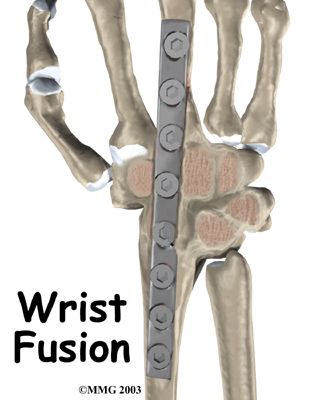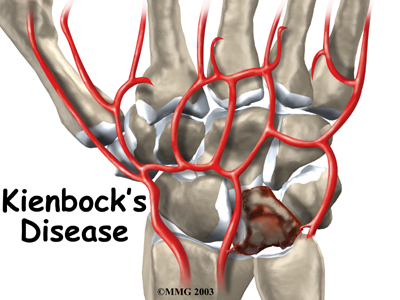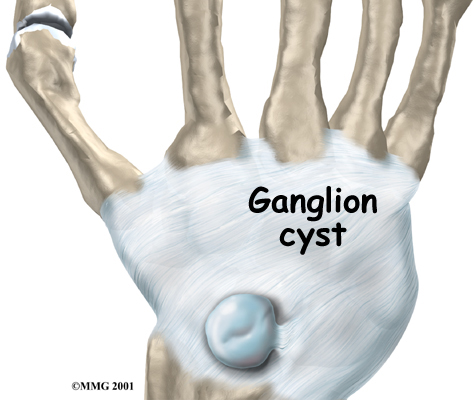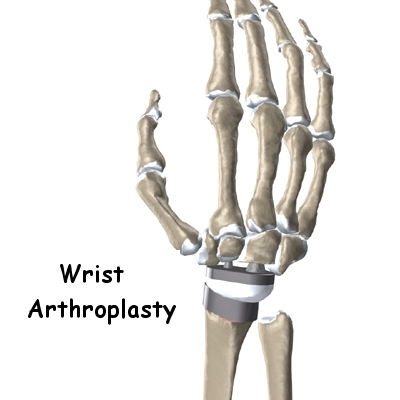
Wrist Fusion
Arthritis of the wrist has many causes, and there are many ways of treating the pain. These treatments can be very successful, at least for awhile. But eventually the entire wrist can become so painful that nonsurgical treatments don't work anymore. At this point, your surgeon may recommend a wrist fusion. Wrist fusion may also be necessary after severe trauma to the wrist. Fusion is sometimes called arthrodesis.

Kienbock's Disease
Kienbock's disease is a condition in which one of the small bones of the wrist loses its blood supply and dies, causing pain and stiffness with wrist motion. In the late stages of the disease, the bone collapses, shifting the position of other bones in the wrist. This shifting eventually leads to degenerative changes and osteoarthritis in the joint. While the exact cause of this uncommon disease isn't known, a number of treatment options are available.

Ganglions of the Wrist
A ganglion is a small, harmless cyst, or sac of fluid, that sometimes develops in the wrist. Doctors don't know exactly what causes ganglions, but a ganglion that isn't painful and doesn't interfere with activity can often be left untreated without harm to the patient. However, treatment options are available for painful ganglions or ones that cause problems.

Artificial Joint Replacement of the Wrist
The wrist joint is replaced with an artificial joint (also called a prosthesis) much less often than other joints in the body, such as the knee or the hip. Still, when necessary, this operation can effectively relieve the pain caused by wrist arthritis. When severe arthritis has destroyed the wrist joint, artificial wrist replacement surgery (also called wrist arthroplasty) can help restore wrist strength and motion for many patients.

